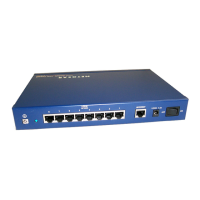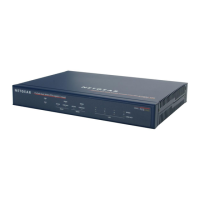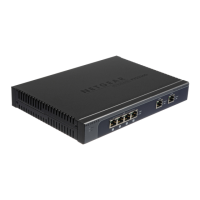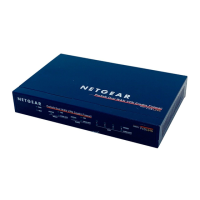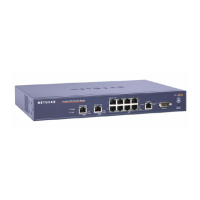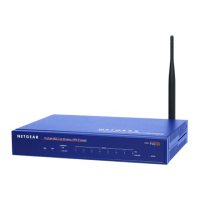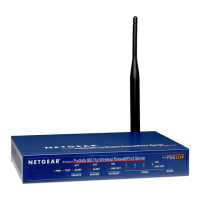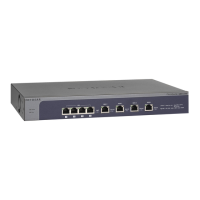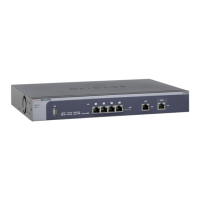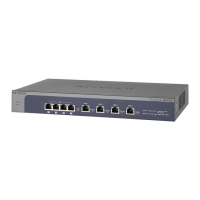IPv4 Firewall Protection
151
ProSafe Wireless-N 8-Port Gigabit VPN Firewall FVS318N
Configure Port Triggering
Port triggering allows some applications running on a LAN network to be available to external
applications that would otherwise be partially blocked by the firewall. Using the port-triggering
feature requires that you know the port numbers used by the application.
Once configured, port triggering operates as follows:
1. A PC makes
an outgoing connection using a port number that is defined in the Port
Triggering Rules table.
2. The wireless
VPN firewall records this connection, opens the additional incoming port or
ports that are associated with the rule in the port triggering table, and associates them with
the PC.
3. The remot
e system receives the PC’s request and responds using the incoming port or ports
that are associated with the rule in the port triggering table on the wireless VPN firewall.
4. The wireless
VPN firewall matches the response to the previous request and forwards the
response to the PC.
Without port triggering, the response from the externa
l application would be treated as a new
connection request rather than a response to a request from the LAN network. As such, it
would be handled in accordance with the inbound port-forwarding rules, and most likely
would be blocked.
Note these restrictions on port triggering:
• On
ly one PC can use a port-triggering application at any time.
• Af
ter a PC has finished using a port-triggering application, there is a short time-out period
before the application can be used by another PC. This time-out period is required so the
wireless VPN firewall can determine that the application has terminated.
Note: For additional ways of allowing inbound traffic, see Inbound Rules
(Port Forwarding) on page 112.
To add a port-triggering rule:
1. Select Se
curity > Port Triggering. The Port Triggering screen displays. (The following
figure shows a rule in the Port Triggering Rule table as an example.)
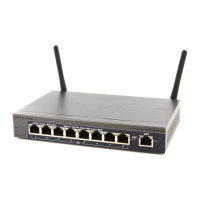
